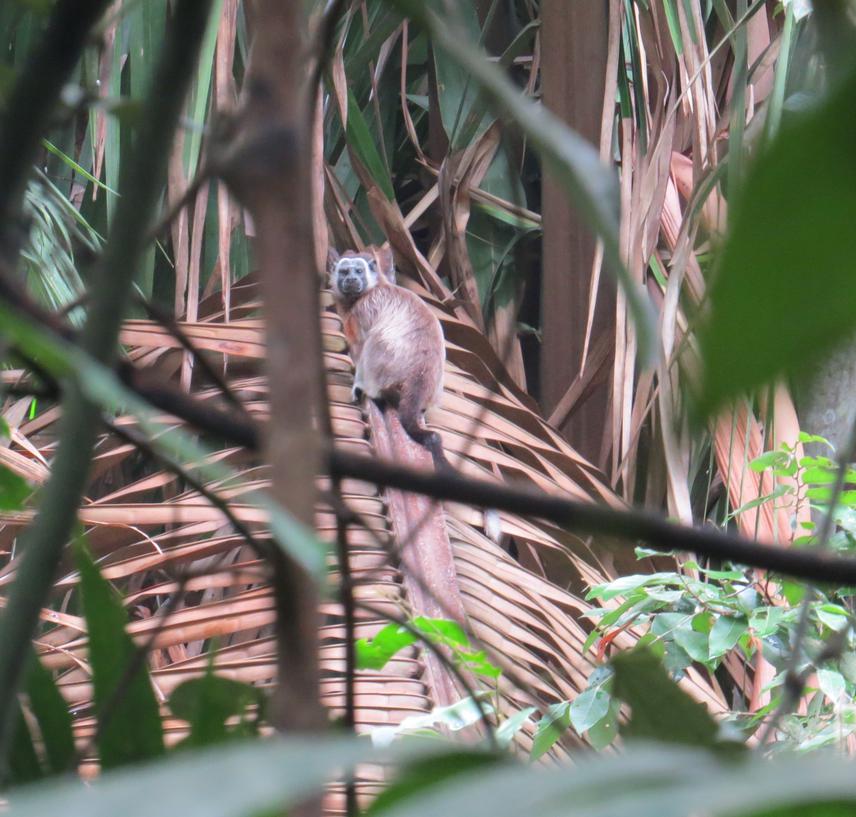Lina Maria Valencia
This project will use genetic data to evaluate how fragmented landscapes affect the movement and dispersal behavior of silvery-brown tamarins (Saguinus leucopus), an endemic and endangered primate species from Colombia.

Silvery brown tamarin.
Changes in landscape characteristics due to habitat fragmentation have been identified as major determinants of animal movement patterns and dispersal. Habitat fragmentation can restrict the dispersal of individuals between populations and cause populations to experience a reduction in their genetic diversity and an increase in the genetic differentiation between populations, both of which ultimately can cause the local extinction of the species inhabiting the landscape. Habitat loss is the most important factor that affects primate diversity, making it important to not only prevent such habitat destruction, but also to understand how gene flow, population structure, genetic diversity and consequently species survival is affected by such habitat transformation.
This project will use genetic data to evaluate how heterogeneous, human modified landscapes affect primate movement and dispersal behavior, using silvery-brown tamarins as a model, in order to understand how habitat fragmentation affects their gene flow and spatial distribution of genetic variation. Silvery brown tamarin's small distribution is restricted to the Andean region of Colombia, an area facing an especially high impact of human activity and intensive colonization due to cattle ranching, logging and expansion of agriculture, which cause the continuous loss, reduction and fragmentation of tamarin habitat.
This project will examine the spatial distribution of genetic variation of tamarin populations and will collect fine scale landscape data to assess the spatial configuration and quality of tamarin habitat. Moreover, this project will evaluate if the landscape affects how tamarin populations are being structured and in turn identify if tamarin dispersal occurs preferentially through certain features of the landscape.
The results of this project will provide an empirical understanding of how habitat features affect tamarin movement, gene flow and population persistence, and will contribute to identifying the ecological requirements for habitat corridors to connect isolated populations of this species.